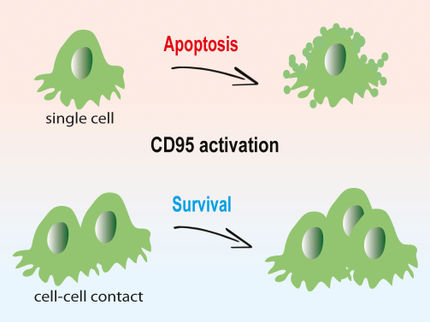New hope in the battle against glioblastoma
Researchers at the University of California, San Diego School of Medicine have discovered that FDA-approved anti-psychotic drugs possess tumor-killing activity against the most aggressive form of primary brain cancer, glioblastoma. The finding was published in the online edition of Oncotarget.
The team of scientists, led by principal investigator, Clark C. Chen, MD, PhD, vice-chairman, UC San Diego, School of Medicine, division of neurosurgery, used a technology platform called shRNA to test how each gene in the human genome contributed to glioblastoma growth. The discovery that led to the shRNA technology won the Nobel Prize in Physiology/Medicine in 2006.
"ShRNAs are invaluable tools in the study of what genes do. They function like molecular erasers," said Chen. "We can design these 'erasers' against every gene in the human genome. These shRNAs can then be packaged into viruses and introduced into cancer cells. If a gene is required for glioblastoma growth and the shRNA erases the function of that gene, then the cancer cell will either stop growing or die."
Chen said that one surprising finding is that many genes required for glioblastoma growth are also required for dopamine receptor function. Dopamine is a small molecule that is released by nerve cells and binds to the dopamine receptor in surrounding nerve cells, enabling cell communication.
Abnormal dopamine regulation is associated with Parkinson's disease, schizophrenia, and Attention Deficit Hyperactivity Disorder. Because of the importance of dopamine in these diseases, drugs have been developed to neutralize the effect of dopamine, called dopamine antagonists.
Following clues unveiled by their shRNA study, Chen and his team tested the effects of dopamine antagonists against glioblastoma and found that these drugs exert significant anti-tumor effects both in cultured cells and mouse models. These effects are synergistic when combined with other anti-glioblastoma drugs in terms of halting tumor growth.
"The anti-glioblastoma effects of these drugs are completely unexpected and were only uncovered because we carried out an unbiased genetic screen," said Chen.
"On the clinical front, the finding is important for two reasons," said Bob Carter, MD, PhD, chairman of UC San Diego, School of Medicine, division of neurosurgery. "First, these drugs are already FDA-cleared for human use in the treatment of other diseases, so it is possible these drugs may be re-purposed for glioblastoma treatment, thereby bypassing years of pre-clinical testing. Second, these drugs have been shown to cross the blood-brain barrier, a barrier that prevents more than 90 percent of drugs from entry into the brain."
Chen is now working with the UC San Diego Moores Cancer Center Neuro-Oncology team to translate his findings into a clinical trial.
Most read news
Topics
Organizations
Other news from the department science

Get the life science industry in your inbox
By submitting this form you agree that LUMITOS AG will send you the newsletter(s) selected above by email. Your data will not be passed on to third parties. Your data will be stored and processed in accordance with our data protection regulations. LUMITOS may contact you by email for the purpose of advertising or market and opinion surveys. You can revoke your consent at any time without giving reasons to LUMITOS AG, Ernst-Augustin-Str. 2, 12489 Berlin, Germany or by e-mail at revoke@lumitos.com with effect for the future. In addition, each email contains a link to unsubscribe from the corresponding newsletter.























































